There’s no denying that what most homeowners want is a luscious, green lawn that the whole family can enjoy. However, cultivating a perfectly, green and curated lawn can be a little tricky with the varying climates in Australia.
So, how does one choose the right kind of turf to ensure it doesn’t only survive, but thrive year-round? Let’s take a look at the most popular grass types in Australia, as well as what you’ll need to consider before purchase.
More...
How to Choose the Best Type of Turf
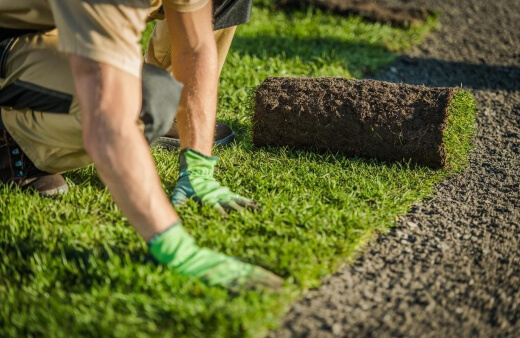
Before picking from the many turf varieties, it’s essential to consider a few things first, like installation requirements, appearance, cost and of course, maintenance.
The last thing you want to do is pick an expensive grass that’s going to struggle in your climate and require a crazy amount of upkeep.
- Installation. While most gardeners are happy to head straight for turf, some varieties of grass are best grown from seed. Either way, your garden will need a little attention before installing your turf or sowing your seed.
Do some research to discover what’s best suited for your preferred grass type. - Budget. How much you’re willing to spend will affect what kind of grass you’re able to choose. Although from a distance most types of grass seem to largely sit around the same price range, the maintenance costs can vary significantly.
- Appearance. Once you’ve nailed down most of the logistics, you can start to consider the overall appeal. Would you prefer a lighter or darker shade of grass? Do you want a broad-leaved or fine-leafed variety?
Best Types of Grass in Australia
There are very popular grass types in Australia that are almost perfectly suited to our climate. Here are a few of the best turf varieties to consider:
Sir Walter Buffalo Grass
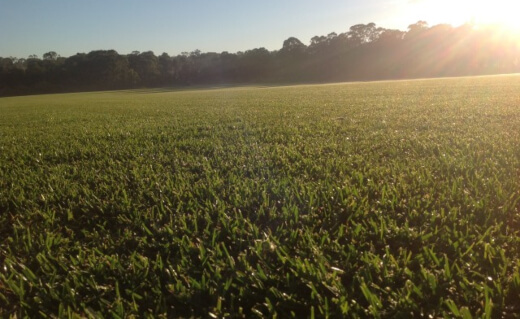
Possibly one of the most popular choices, Buffalo grass is prized for its durability and ease of growth. However, some gardeners may find getting their buffalo grass to establish itself kind of tricky.
This kind of grass is gloriously green with wide leaf blades and is known to be resistant to most kinds of weeds. As it’s very hardy and can take a little trampling, it’s the perfect choice for homes with kids and pets.
Sir Walter Buffalo grass is incredibly easy to establish and is often most successful when grown from seed. This grass is both shade and drought tolerant so you won’t have to worry too much about where you plant, or if you tend to neglect it from time to time.
This grass variety should be mowed as much as every two weeks during the Spring, and rarely during the winter. As a turf, it's priced at roughly $15.95 per square metre, making it an affordable option for Australian gardens.
TifTuf Bermuda Grass
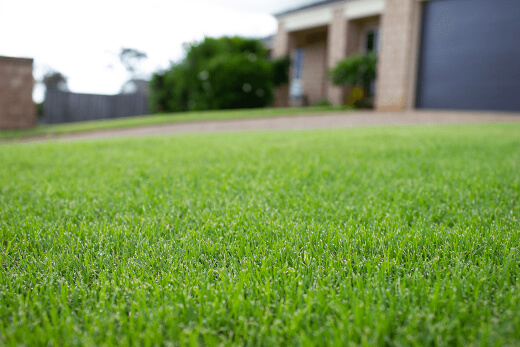
Source: Buyturfonline.com.au
Not only does Bermuda grass sound wonderfully exotic, but it’s a great choice for Australian climates. It’s a dense grower with soft, fine leaves that will spread around your garden with ease. It’s known to have one of the fastest growth rates of most warm-weather grasses.
Due to this, however, it can be quite invasive and will require a little bit extra maintenance than most. During the spring and summer, you’ll need to mow your lawn often to keep it looking neat.
You may also have the issue that your Bermuda spreads, even to areas where you don’t want it. For this, you can consider creating a border that will inhibit growth.
Bermuda grass is ideal as turf or grown from seed, which leaves growers with a wealth of options. Plus, at a price point around $15.95 per square metre, it’s another affordable option.
Don't miss our TifTuf Bermuda Grass Installation, Care, and Maintenance Guide


Get Your Free Guide:
Master Growing Australian Natives eBook
A Must Have Complete Guide for Every Australian Garden
Get Your Free Guide:
Master Growing Australian Natives eBook
A Must Have Complete Guide for Every Australian Garden
Sir Grange Zoysia

Ideal for gardens that get plenty of suns, Sir Grange Zoysia grass is a dense and low-maintenance type of turf. Unlike its drought-loving counterparts, zoysia grass can handle having wet feet, which makes it suitable for areas that tend to flood during heavy rains.
Zoysia is considered a medium-green grass, blending dark and light leaves into a gorgeous, green carpet. However, it takes time to establish itself. So, you may need some patience.
In regions that experience a dry and hot summer, you’ll need to make sure your grass gets plenty of deep watering, especially in the first few months.
When it comes to maintenance, it’s also important to note that this grass variety needs to be aerated during the spring. Sir Grange Zoysia grass is priced around $15.95 on average, which makes it another great option.
Which Zoysia is best for you? Sir Grange Zoysia Vs. Empire Zoysia
Kikuyu Grass

Source: Myhometurf.com.au
If you’re looking for grass that is tough and can take some damage, the Kikuyu grass is the way to go. This incredibly hardy grass is great for the Australian climate and offers garden year-round greenery.
Still, it’s also an aggressive grower and will need a little more maintenance with regular mowing. However, the roots retain a lot of water, which means regularly soaking your lawn won’t be a necessity.
Priced at around $10.50 per square metre, it is a very cost-effective turf option. Plus, it’ll spread fairly quickly so you won’t need to have covered every inch of your lawn.
If you’re looking at Kikuyu Grass, the Eureka type seems to be the one that offers gardeners the biggest peace of mind. Here is everything you need to know to grow and care for Kikuyu grass.
Queensland Blue Couch Grass

Source: Allaboutturf.com.au
Couch grass or Cynodon dactylon has often been used for larger fields and parks. However, it is also a great choice for smaller gardens and manicured lawns.
It’s a fine, soft-leaved grass that offers a fantastic under-foot feel. Now, it’s important to note that couch grass is another aggressive grower and will require lots of mowing throughout the year.
Priced slightly cheaper, at around $9.65 per square metre, it’s a very cost-conscious choice. Plus, it can be grown freely with some seed, taking only 10 to 14 days to germinate.
Another type of grass also commonly called as couch grass is the Elymus repens. Check out our couch grass growing guide to learn more.
Tall Fescue
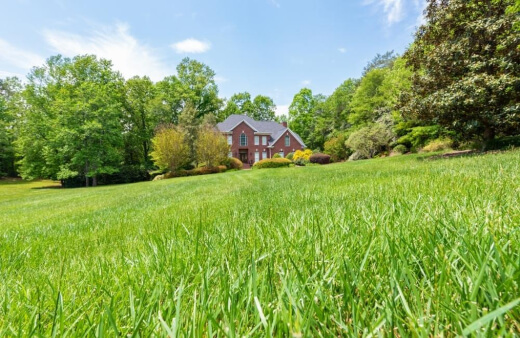
Tall fescue is a great turf variety that can be grown in a wide range of conditions. It’s suitable for multiple soils and can handle itself in a wide range of soils.
It’s versatile and a good option for those who are needing something with resilience and durability. Lawns need to be kept moist while they establish themselves and will need to be mown every 3 to 4 weeks or so.
This variety will also require yearly aeration for the best results. See our round up the best lawn aerators that will fit any gardeners' needs.
Getting Ready to Lay Turf
Laying turf is probably the easiest and quickest way to establish a new lawn. Although it may seem a little intimidating at first, laying turf is a standard process and when followed almost always guarantees success.
It’s essential to prepare your lawn before laying your turf, taking the time to lay it properly, and looking after it correctly once installed. For everything you need to know, you can follow our handy how to lay turf guide.
Taking Care of Your New Lawn
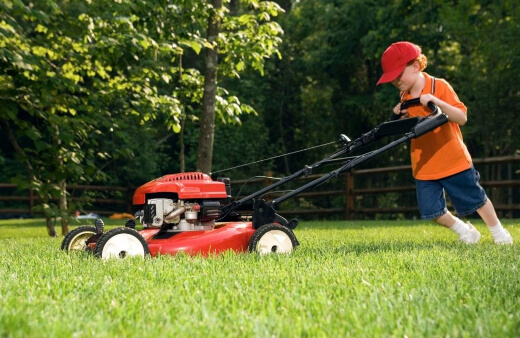
Once you’ve chosen the best type of turf for your garden and installed it, it’s essential to make sure you maintain it properly so all your efforts aren’t wasted, and you can look forward to a thriving lawn.
Here are a few maintenance tips to help you get started:
- Manage Your Watering. Now, most gardeners will know that it’s essential to keep your grass well-watered as it establishes itself. However, over-watering can lead to root growth. Check your soil regularly, making sure it’s moist but not muddy.
- Pick the Right Sprinkler. New grass can be tender so you don’t want to just give it massive gusts of water every time you water.
A soft sprinkler that gently penetrates the soil is better than creating massive puddles of water which is why it is beneficial to invest in a good garden irrigation system. - Wait for The Right Time to Start Mowing. Young grass needs to develop some solid roots before you decide to mow it. Sure, this may mean it looks a little unruly at first, but make sure to wait until the right time to mow.
Be sure to pick the right mower and start at the highest setting when you start so you don’t damage or cause patches in your grass.
Be sure to keep up with the right maintenance routine to ensure your grass establishes and continues to thrive year-round.
Of course, if the turf isn’t where you’re hoping to go, maybe it’s time to consider some amazing Lawn alternatives to switch it up?
Grass Types in Australia Frequently Asked Questions
What is the most common type of grass in Australia?
Buffalo grass is the most common grass for lawns, gardens, and yards in Australia. The easy-to-maintain, durable grass is ideal for homes with kids, pets, or who like to throw a party.
Buffalo grass has been the most popular type of grass in Australia for decades, and there are no signs of that changing any time soon.
What is the best type of grass in Australia?
As well as being the most popular, buffalo grass is the best around lawn grass you can sow and works just as well from seed as it does from turf. It’s able to cope with drought, and extreme summer sun, but does struggle when it is in competition with conifers or large wide-rooted shrubs.
How do I identify my grass in Australia?
There are some great apps on the market to help identify grass types, but a google search will usually work just as well. The chances are your lawn grass is one of the varieties we listed, and identifying the blade type, colour and width, as well as root structure will give you an easy indication of the type of grass in your own lawn.
How do I know the difference between buffalo and Kikuyu grass?
Kikuyu grass has a narrow to medium leaf (or blade), while buffalo grass is noticeably wider. Kikuyu grass will be bright green, like traditional football pitches, in summer, while buffalo grass is a much deeper green – more similar to the tone of rolling golf courses.
What is the lowest maintenance grass type in Australia?
Zoysia grasses are extremely low maintenance and can cope well with drought without any need for irrigation. Like all things in life though, there is a compromise that comes with the ease of growing this useful grass – it just doesn’t look as good.
The duller green and typically patchy germination make it harder to establish, but if your lawn isn’t the main feature in your garden it’s a good choice.
What is the softest grass in Australia?
As well as being easy to maintain, zoysia is also one of the softest grasses you can grow in Australia. It’s comfortable underfoot and helps to hold moisture down without becoming boggy, making it brilliant for sitting out over summer, as well as staining clothes less for a bonus!)
What is the fastest growing grass seed in Australia?
The fastest growing grass to grow from seed in Australia is Kikuyu or Buffalo grass. They are both reliably good germinators, with even growth in their first few weeks, and are usually ready to walk on in less than a month.
What grass is used on football fields in Australia?
AFL venues use a mix of couch or Bermuda grass and ryegrass to create tough, fast establishing turf that can take a serious beating. Their turf is generally resown annually, and sown much tighter than is usually recommended in gardens.
What is the best looking grass in Australia?
St. Augustine grass is a gorgeous turf, with emerald green blades that flatten out perfectly and take mown lines really well for that classic striped lawn we all dream of.
Can you mix grass types?
Mixing grass types is not only common, but good sense too. Different grasses can knit together to create a more natural-looking lawn that holds up to heavy foot traffic and poor weather.
Bermuda and ryegrass work really well together for a low-maintenance but shimmering lawn.
What is the best fertiliser for lawn grass in Australia?
Yates’ Buffalo Pro Lawn Fertiliser is great for all grass types, but specially formulated to give buffalo grass types their perfect nutrient mix. But just because buffalo is the most popular grass in Australia doesn’t mean this fertiliser isn’t great for other grass types like kikuyu and ryegrass too.
Check out our complete Australian garden fertiliser guide to learn more about different types of fertilisers and how to choose the best for your gardening needs.
Is couch grass good for lawns in Australia?
Couch grass is a useful lawn seed to help with very hard wearing lawns, with heavy foot traffic and regular mowing, but it is invasive, and will quickly take over the garden if you don’t mow the grass at least twice a week in summer.
Couch grass should really be avoided in domestic spaces, and kept on the golf course where it belongs.
Now You Know the Best Grass Types in Australia!
Sure, picking the best kind of turf may seem like a challenge, but once you do, you’ll be happy in the knowledge that your new grass lawn is going to thrive in your garden and give you the home paradise you deserve.
There you have it! Everything you need to know about the best grass types in Australia.
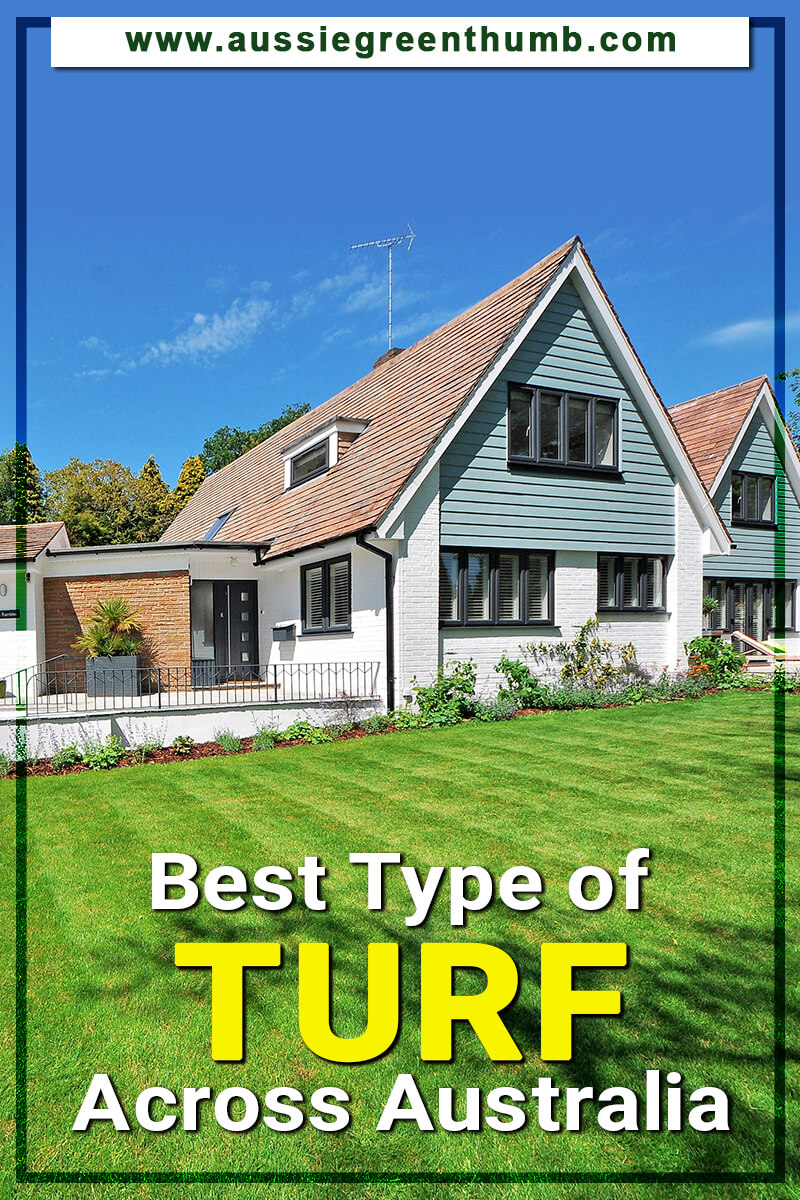
Published on January 9, 2023 by Gary Clarke
Last Updated on October 25, 2023




